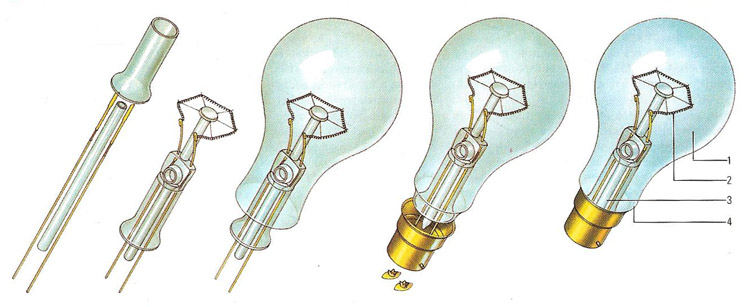light bulb

Heat generated by the passage of electric current is the source of light in a filament or incandescent lamp. Because it is enclosed in a vacuum, or inert gas (1), the filament (2) cannot oxidize when the current passes through, causing it to become hot. It is made of a tungsten alloy, combining mechanical and thermal strength. Although it is extremely thin, it glows white hot when enough current passes through it. It is supported on two glass columns (3) through which the connecting wires pass. The whole assembly is enclosed in a thin, glass envelope (4). Only about 2% of the electrical energy is turned into light.
A light bulb is a device consisting of a metal filament that emits light when heated to incandescence by electricity. An early form of light bulb dates to 1860, when Joseph Swan made a workable model. In 1879 Thomas Edison patented an improved design in the US.
Modern light bulbs comprise a filament enclosed by a glass envelope in a vacuum containing a noble gas such as argon. The filament is usually made of tungsten because of its high tensile strength, low evaporation, and high efficiency in converting electrical energy into light as it glows white hot.


